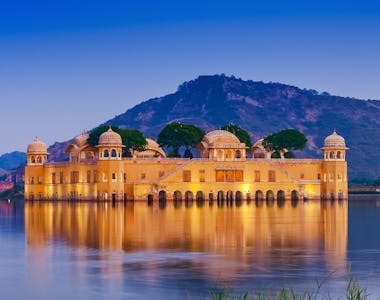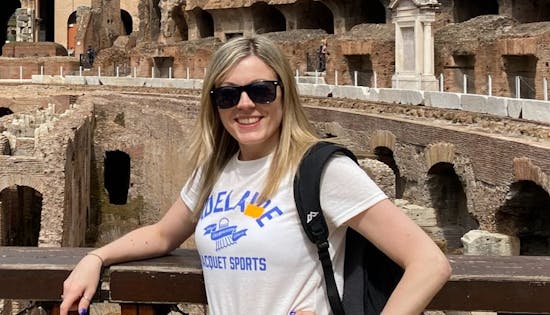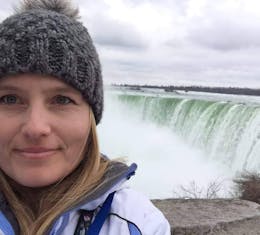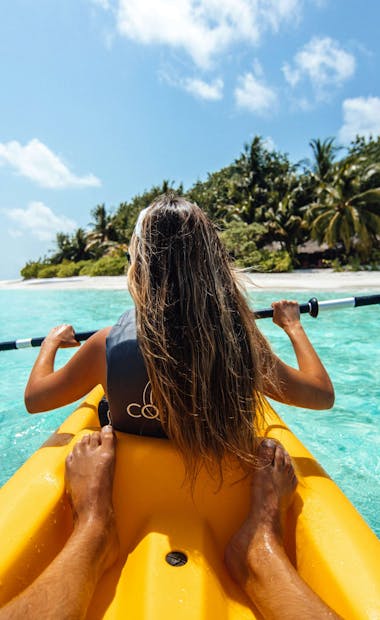India Tours
Spectacular scenery from the snow capped peaks of the Himalayas to the grasslands of Gujarat
Popular tours
- Save15%
 View Tour
View TourThe India Experience - 14 Days
- Delhi to Delhi
- Age group: 18 - 39
- Max group size: 22
Was:£1,016From£864  View Tour
View TourNorth India: Deserts, Markets & Magical Cities - 22 Days
- Delhi to Delhi
- Age group: 12 - 99
- Max group size: 20
From£2,139- Save16%
 View Tour
View TourIndia Nepal Expedition - 20 Days
- New Delhi to Kathmandu
- Age group: 18 - 39
- Max group size: 22
Was:£1,991From£1,676 - Save25%
 View Tour
View TourGolden Triangle - 8 Days
- New Delhi to New Delhi
- Age group: 12 - 100
- Max group size: 18
Was:£679From£507 - Save15%
 View Tour
View TourIndia Snapshot - 6 Days
- New Delhi to Jaipur
- Age group: 18 - 39
- Max group size: 22
Was:£345From£293 - Save25%
 View Tour
View TourIndia Encompassed - 28 Days
- New Delhi to Kochi
- Age group: 12 - 100
- Max group size: 15
Was:£2,249From£1,678
India Tours
Welcome to Incredible India, a land of vibrant colors, rich history, and breathtaking diversity. Embark on a journey like no other with our small group guided tours, designed to immerse you in the wonders of this extraordinary country. India is a treasure trove of captivating destinations, where ancient traditions blend harmoniously with modern marvels. Our expert guides will accompany you on an unforgettable exploration of India's cultural heritage, architectural wonders, and natural splendors.
One of the highlights of our India tours is the chance to visit the iconic Taj Mahal in Agra. This UNESCO World Heritage site is a testament to love and beauty, with its marble façade glowing in the golden rays of the sun. As you step through its grand gates, you'll be transported back in time, mesmerized by the intricate carvings and the story behind this architectural masterpiece.
But India has so much more to offer beyond the Taj Mahal. Explore the bustling streets of Old Delhi, where rickshaws navigate through a maze of narrow lanes, revealing hidden gems like Jama Masjid, one of the largest mosques in India. Let your senses come alive in the vibrant bazaars, where the aroma of spices fills the air and the colorful textiles beckon you to take a piece of India's rich craftsmanship home with you.
Venture to Rajasthan, the land of majestic forts and opulent palaces. Marvel at the grandeur of Jaipur's Amber Fort, perched majestically on a hilltop, and soak in the royal ambiance of Udaipur's City Palace, set against the shimmering waters of Lake Pichola. The desert landscapes of Jaisalmer will transport you to a bygone era, where camel safaris and starlit nights under the vast expanse of the sky create unforgettable memories.
For nature enthusiasts, the tranquil backwaters of Kerala offer a serene escape. Cruise through the labyrinthine network of canals on a traditional houseboat, surrounded by lush greenery and listening to the gentle lapping of water against the boat's hull. Explore the hill stations of the Western Ghats, where mist-covered mountains and tea plantations create a picture-perfect landscape that will leave you breathless.
No visit to India is complete without savoring its world-renowned cuisine. From the fiery flavors of street food to the delicate aromas of traditional curries, the culinary journey in India is a treat for the taste buds. Indulge in fragrant biryanis, tangy chaats, and delectable sweets like gulab jamun and jalebi.
Our small group guided tours ensure a personalized and immersive experience, with expert guides sharing their insights and stories along the way. We take care of the logistics, allowing you to focus on soaking up the magic of India.
So, join us on an unforgettable adventure as we unveil the wonders of India. Let the enchanting landscapes, the warm hospitality, and the vibrant culture captivate your heart. Choose from our meticulously crafted India tours and get ready to embark on the journey of a lifetime. India awaits you with open arms, ready to leave an indelible mark on your soul.
When is the best time to visit India?
The best time to visit India largely depends on the region you plan to explore, as the country experiences diverse climates and weather patterns. Here's a breakdown of the seasons and the ideal time to visit different parts of India:
Winter (October to February):
- This is generally considered the peak tourist season in India, especially for popular destinations like Delhi, Agra, Rajasthan, and Kerala.
- The weather is pleasant and mild, with temperatures ranging from 10°C to 25°C (50°F to 77°F) in most parts of the country.
- It's an excellent time for cultural sightseeing, exploring historical monuments, and enjoying outdoor activities.
Summer (March to June):
- Summers in India can be scorching, particularly in the central and northern regions. Temperatures often exceed 40°C (104°F) in places like Delhi, Rajasthan, and parts of South India.
- Hill stations and higher altitude destinations, such as Shimla, Darjeeling, and the Himalayan region, provide relief from the heat and are popular summer retreats.
- If you're planning to visit Ladakh or other high-altitude regions, this is the only time when roads are accessible due to the snowmelt.
Monsoon (June to September):
- Monsoon season varies across different regions of India, with heavy rainfall and high humidity.
- Coastal regions like Goa, Kerala, and parts of the Western Ghats receive heavy rainfall, which can hinder outdoor activities and beach visits.
- However, this period showcases lush green landscapes, and it's a great time for nature enthusiasts, as many wildlife sanctuaries and national parks come alive with flora and fauna.
Shoulder Seasons:
- The months of February, March, and September to November are considered shoulder seasons, as they transition between the peak tourist seasons.
- During these months, you can often find more affordable prices, fewer crowds, and pleasant weather in many parts of the country.
It's important to note that India's vast size and geographic diversity result in variations in weather patterns. Before planning your trip, research the specific region(s) you intend to visit to ensure you choose the best time based on their specific climatic conditions.
Overall, the winter months of October to February are generally considered the best time to visit India for most regions, as the weather is pleasant and ideal for exploring the country's rich cultural heritage and popular attractions.
What are the regions of India ?
India is divided into various regions, each with its own distinct culture, geography, and attractions. Here are the major regions of India:
North India:
- This region includes states such as Delhi, Uttar Pradesh, Rajasthan, Punjab, Haryana, Himachal Pradesh, and Uttarakhand.
- It is known for its historical landmarks like the Taj Mahal, Jaipur's palaces, and the holy city of Varanasi.
- The region is home to the majestic Himalayan mountain range, hill stations like Shimla and Manali, and the scenic valleys of Kashmir and Ladakh.
South India:
- South India comprises states such as Kerala, Tamil Nadu, Karnataka, Andhra Pradesh, and Telangana.
- It is famous for its temple architecture, UNESCO World Heritage sites like Hampi and Mahabalipuram, and the backwaters of Kerala.
- The region offers picturesque landscapes, lush green tea plantations, wildlife sanctuaries, and beautiful beaches along the Malabar Coast.
East India:
- East India includes states like West Bengal, Odisha, Bihar, Jharkhand, and the northeastern states.
- It is known for its rich cultural heritage, historical sites like the ancient ruins of Nalanda, the Sundarbans mangrove forests, and the tea gardens of Darjeeling.
- The northeastern states offer breathtaking landscapes, stunning waterfalls, and diverse indigenous cultures.
West India:
- West India consists of states like Maharashtra, Gujarat, Goa, and parts of Rajasthan.
- It is famous for the bustling city of Mumbai, the UNESCO World Heritage sites of Ajanta and Ellora Caves, the vibrant festivals of Gujarat, and the sandy beaches of Goa.
- The region showcases a blend of modernity and traditional heritage, with a diverse culinary scene and architectural wonders like the forts and palaces of Rajasthan.
Central India:
- Central India encompasses states like Madhya Pradesh, Chhattisgarh, and parts of Maharashtra and Uttar Pradesh.
- It is known for its rich wildlife reserves like Kanha and Bandhavgarh National Parks, historical cities like Bhopal and Gwalior, and the UNESCO World Heritage site of Khajuraho.
- The region offers a mix of wildlife, ancient temples, and architectural marvels.
- Northeast India:
- Northeast India comprises the states of Arunachal Pradesh, Assam, Manipur, Meghalaya, Mizoram, Nagaland, Sikkim, and Tripura.
- It is known for its stunning landscapes, lush green mountains, diverse indigenous cultures, and unique wildlife.
- The region offers opportunities for trekking, wildlife safaris, exploring tribal villages, and experiencing vibrant festivals.
These regions encompass the incredible diversity of India, with each offering its own unique experiences, cuisines, and attractions. Exploring multiple regions allows travellers to witness the country's rich cultural heritage and natural beauty from different perspectives.
Do I require a visa for my visit to India?
Yes, most travellers visiting India will require a visa. The type of visa and the application process may vary depending on your nationality and the purpose of your visit. Here are some important details regarding the Indian visa requirements:
Tourist Visa: If you are planning to visit India for tourism, sightseeing, visiting friends or relatives, or participating in short-term courses or conferences, you will typically need to apply for a Tourist Visa (e-Visa or regular visa). The e-Visa is available for citizens of many countries and can be applied for online. The regular visa requires submitting an application at the Indian embassy or consulate in your home country.
Business Visa: If you are traveling to India for business-related purposes, such as meetings, conferences, or trade activities, you will need to apply for a Business Visa. This visa is also available as an e-Visa or a regular visa, depending on your nationality.
Other Types of Visas: India offers various types of visas for specific purposes, such as medical treatment, research, employment, or long-term stays. The application process and requirements for these visas may differ, and it is advisable to consult the nearest Indian embassy or consulate or visit the official website of the Indian Ministry of External Affairs for detailed information.
It is essential to check the specific visa requirements well in advance of your planned travel dates, as the application process can take time. Ensure that your passport is valid for at least six months beyond your intended stay in India.
Additionally, the e-Visa facility provides a streamlined and convenient process for many travellers, allowing them to apply online and receive an electronic visa via email. However, it is crucial to carefully read and follow the instructions and requirements provided by the Indian government's official e-Visa website.
Remember to plan and apply for your visa well in advance to avoid any last-minute complications and ensure a smooth and hassle-free entry into India.
What are the main attractions to experience in India?
India is a land of diverse attractions that cater to every traveler's interests. Here are some of the main attractions and experiences you can look forward to in India:
Taj Mahal, Agra: This UNESCO World Heritage site is a symbol of eternal love and a must-visit attraction. Admire the stunning architecture of this white marble mausoleum, particularly at sunrise or sunset.
Jaipur's Palaces and Forts, Rajasthan: Explore the "Pink City" of Jaipur, known for its magnificent palaces like the Hawa Mahal (Palace of Winds) and the City Palace. Visit the Amber Fort, a majestic hilltop fortress offering panoramic views of the city.
Varanasi and the Ganges River: Experience the spiritual essence of Varanasi, one of the oldest inhabited cities in the world. Witness the mesmerizing Ganga Aarti ceremony on the banks of the sacred Ganges River and take a boat ride to observe the rituals and colourful ghats.
Kerala Backwaters: Cruise through the tranquil backwaters of Kerala on a traditional houseboat, surrounded by lush greenery and picturesque landscapes. Immerse yourself in the serene beauty of this unique ecosystem.
Hampi, Karnataka: Step back in time as you explore the UNESCO World Heritage site of Hampi. Marvel at the ancient ruins and rock-cut temples that dot the landscape, revealing the remnants of the Vijayanagara Empire.
Wildlife Sanctuaries and National Parks: Embark on a thrilling wildlife safari in India's national parks, such as Ranthambore, Bandhavgarh, or Kanha, to spot majestic tigers and other exotic wildlife. Explore the UNESCO-listed Western Ghats for a chance to encounter elephants, Indian bison, and rare bird species.
Golden Triangle: Discover India's Golden Triangle, comprising Delhi, Agra, and Jaipur. This popular tourist circuit showcases a blend of historical monuments, vibrant markets, and cultural experiences.
Varied Cuisine: Delight in the diverse flavours of Indian cuisine. From the spicy street food of Mumbai to the aromatic biryanis of Hyderabad and the vegetarian delights of Gujarat, each region offers its own culinary specialties.
Spiritual Retreats: Seek spiritual solace in places like Rishikesh, the "Yoga Capital of the World," where you can participate in yoga and meditation retreats. Explore Dharamshala in the Himalayas, home to the Dalai Lama and the Tibetan Buddhist community.
Cultural Festivals: Witness the vibrancy of Indian festivals such as Diwali (Festival of Lights), Holi (Festival of Colors), or Navaratri/Durga Puja. Experience the joyous celebrations, vibrant processions, and traditional dances that showcase India's rich cultural heritage.
These are just a few highlights of the myriad experiences that await you in India. The country offers an endless array of cultural, historical, natural, and culinary wonders, providing something for every traveler to discover and cherish.
What is the local currency in India, and can I use credit cards?
The local currency in India is the Indian Rupee (INR). It is advisable to carry some local currency for small purchases, local markets, and areas where cash is the preferred mode of payment.
Credit cards are widely accepted in major cities, upscale hotels, restaurants, and larger establishments. Visa, MasterCard, and American Express are the most commonly accepted cards. However, it's important to note that smaller establishments, local markets, and rural areas may prefer cash transactions.
To ensure a smooth experience when using credit cards, here are a few tips:
Inform your bank: Prior to your trip, inform your bank or credit card provider about your travel plans to India. This helps prevent any potential issues with your card being flagged for suspicious activity when used abroad.
Carry multiple payment options: It's advisable to carry a mix of payment options, including cash, credit cards, and a debit card. This provides flexibility in case a particular card is not accepted or encounters issues.
Keep cash for emergencies: While credit cards are widely accepted, it's wise to carry some cash for emergencies, smaller establishments, or remote areas where card payment may not be available.
Check for card acceptance: Before making a purchase, inquire whether credit cards are accepted. Look for signage indicating card acceptance, or ask the establishment directly to avoid any surprises.
ATM availability: ATMs are readily available in major cities and towns across India. They are a convenient way to withdraw cash in the local currency. However, be cautious when using ATMs in remote or unfamiliar areas and prioritise using ATMs located in secure and well-lit areas.
Remember to keep your credit cards and cash secure while traveling. Use ATMs located inside reputable banks or secure locations, and be cautious of card skimming devices.
It's always a good idea to carry some local currency for smaller transactions, tipping, and places where card payments may not be feasible. Be sure to exchange your currency at authorised currency exchange counters or banks to ensure fair rates and avoid counterfeit notes.
Lastly, keep track of your expenses and retain receipts for reference and potential reimbursement purposes.
Will I require any vaccination for my visit to India?
Yes, it is recommended to have certain vaccinations before traveling to India to protect yourself against common diseases. The specific vaccinations you may require depend on factors such as your current immunisation status, the duration of your stay, the areas you plan to visit, and your individual health condition. It is advisable to consult with a healthcare professional or travel health clinic at least 4-6 weeks before your trip to discuss your specific needs. They can provide personalised advice based on your medical history and the latest recommendations.
Here are some vaccinations commonly recommended for travellers to India:
Routine Vaccinations: Ensure that your routine vaccinations, such as measles-mumps-rubella (MMR), diphtheria-tetanus-pertussis (DTaP), polio, and seasonal influenza, are up to date.
Hepatitis A: Hepatitis A is a viral infection transmitted through contaminated food or water. It is recommended for all travellers to India, as there is a risk of exposure.
Typhoid: Typhoid fever can be contracted through contaminated food or water. Vaccination is recommended, particularly if you plan to explore rural areas or have a longer stay in India.
Hepatitis B: Hepatitis B is a viral infection transmitted through contact with infected blood or body fluids. Vaccination is recommended for travellers who may have close contact with the local population, require medical procedures, or engage in activities that may increase the risk of exposure.
Tetanus-Diphtheria-Pertussis (Tdap): If you haven't received a tetanus-diphtheria-pertussis booster in the past 10 years, it is advisable to get vaccinated before your trip.
Polio: Polio is still endemic in some parts of India. Ensure you have received a polio vaccine as per your country's guidelines.
Japanese Encephalitis: This vaccine is recommended for travellers planning to spend a month or longer in rural areas of India, particularly during the monsoon season, when the risk of mosquito-borne diseases is higher.
Rabies: If you plan to spend significant time outdoors, work with animals, or will be in remote areas where medical help may not be readily available, you may consider a pre-exposure rabies vaccination.
It is important to note that these are general recommendations, and your healthcare provider will assess your specific needs based on various factors. They may also provide advice on other health considerations such as malaria prophylaxis, traveler's diarrhea prevention, and general health and safety measures during your trip to India.
Is India a safe destination to visit?
India is generally a safe destination for tourists, but like any other country, it's important to exercise caution and be aware of certain factors to ensure a safe and enjoyable trip. Here are some tips to help you stay safe while visiting India:
Research and plan: Before your trip, research the areas you plan to visit and familiarise yourself with local customs, laws, and cultural norms. Be aware of any travel advisories or warnings issued by your government or relevant authorities.
Stay vigilant: While India is generally safe, it's advisable to stay alert, especially in crowded places, tourist areas, and public transportation. Be cautious of your belongings and avoid displaying wealth or valuable items that may attract unwanted attention.
Dress modestly: Respect the local culture by dressing modestly, particularly when visiting religious sites. Cover your shoulders, avoid wearing revealing clothing, and remove your shoes when required.
Transportation safety: Use licensed and reputable transportation services. When using taxis or rickshaws, negotiate fares beforehand or use metered taxis. If using public transportation, keep an eye on your belongings and be cautious of pickpockets.
Street vendors and scams: Be cautious of street vendors who may overcharge or try to sell counterfeit goods. Use reputable shops and restaurants recommended by trusted sources. Be aware of common scams and avoid sharing personal information or engaging in financial transactions with unknown individuals.
Food and water safety: Drink bottled water and avoid consuming raw or uncooked food from street vendors unless you are confident in its hygiene and quality. Opt for hot, freshly cooked meals from reputable establishments.
Health precautions: Take necessary health precautions, such as getting required vaccinations, using insect repellent to prevent mosquito bites, and following proper food and water hygiene practices. Carry necessary medications and travel insurance that covers medical expenses.
Solo travel: If you are traveling solo, inform someone about your whereabouts and itinerary. Use reliable transportation options, stay in well-reviewed accommodations, and avoid traveling alone at night, especially in unfamiliar areas.
Respect local customs: Respect local customs, traditions, and religious practices. Seek guidance and observe appropriate behaviuor when visiting religious sites or participating in cultural events.
Use common sense: Trust your instincts and use common sense throughout your trip. If something feels unsafe or uncomfortable, remove yourself from the situation.
By being aware, prepared, and respectful, you can have a safe and enriching experience while exploring the incredible diversity and beauty that India has to offer.
Is India a good destination for a solo traveller?
India can be a rewarding destination for solo travelers, offering unique experiences and opportunities for personal growth. However, it's important to note that traveling solo in India requires some extra preparation and awareness. Here are some factors to consider when deciding if India is the right destination for your solo adventure:
Diversity of Experiences: India is a vast and diverse country with a rich cultural heritage, breathtaking landscapes, and a wide range of experiences. Whether you're exploring historical sites, immersing yourself in spirituality, or indulging in diverse cuisines, India has something to offer every solo traveler.
Warm Hospitality: Indian people are known for their warmth, hospitality, and curiosity towards visitors. You're likely to encounter friendly locals who are willing to help and engage in conversations. This can make your solo journey more enjoyable and provide opportunities to connect with the local culture.
Safety Precautions: While India is generally safe for solo travelers, it's important to take precautions to ensure your safety. Research your destinations, stay in well-reviewed accommodations, and use reputable transportation services. Avoid walking alone in isolated areas at night and be cautious of your belongings in crowded places.
Cultural Sensitivity: India has diverse cultural norms and traditions. It's important to respect and understand local customs, dress modestly, and be mindful of your behavior, particularly when visiting religious sites or rural areas. Being culturally sensitive can help you have a more immersive and respectful experience.
Transportation and Logistics: India has a well-connected transportation system, including trains, buses, and domestic flights, making it relatively easy to navigate the country as a solo traveler. However, it's advisable to plan your routes in advance, book transportation tickets in advance whenever possible, and have a general understanding of the local transportation system.
Community and Group Experiences: If you're seeking social interactions and want to meet fellow travelers, India offers opportunities for joining group tours, volunteering, or participating in yoga and meditation retreats. These can provide a sense of community and companionship during your solo journey.
Trusting Your Intuition: As a solo traveler, it's important to trust your instincts and make informed decisions. If something feels uncomfortable or unsafe, remove yourself from the situation and seek help or guidance from trusted sources.
Ultimately, whether India is a good destination for a solo traveler depends on your personal preferences, comfort level, and travel experience. It can be an enriching and transformative experience, but it's essential to plan, prepare, and maintain a level of vigilance to ensure a safe and enjoyable trip.
What is the food like in India?
Indian cuisine is renowned for its rich flavors, diverse spices, and vibrant culinary traditions. It is a reflection of India's cultural diversity and regional variations. Here's a glimpse into the wonderful world of Indian food:
Regional Diversity: India's culinary landscape is incredibly diverse, with each region having its own unique dishes and cooking styles. From the spicy curries of the North to the coconut-based dishes of the South, and from the street food delights of Mumbai to the aromatic biryanis of Hyderabad, every region offers a distinct culinary experience.
Spices and Flavors: Indian cuisine is famous for its aromatic spices, such as turmeric, cumin, coriander, cardamom, and cloves. These spices are used in various combinations to create flavorful dishes. From mild and fragrant to fiery and spicy, the range of flavors in Indian cuisine is extensive.
Vegetarian and Non-vegetarian Options: India is known for its vegetarian cuisine, with a wide array of vegetarian dishes available. However, non-vegetarian options are also popular, particularly in coastal regions and certain communities. You'll find delicious meat, chicken, and seafood dishes cooked in a variety of styles.
Curries and Gravies: Indian curries and gravies are a staple in Indian cuisine. They are usually made with a combination of spices, herbs, and vegetables or meat, simmered to perfection. Popular curries include butter chicken, chicken tikka masala, palak paneer (spinach and cottage cheese), and dal (lentil curry).
Breads and Rice: Indian cuisine offers a wide range of breads and rice dishes to accompany the main course. Naan, roti, and paratha are popular bread options, while biryanis, pulao, and rice dishes like lemon rice and coconut rice are flavorful additions to any meal.
Street Food Delights: India is famous for its street food culture, offering a plethora of savory snacks and sweet treats. From the mouthwatering chaat (spicy street snacks) like pani puri and bhel puri to the sweet indulgence of jalebi and gulab jamun, exploring Indian street food is a must for food enthusiasts.
Sweets and Desserts: Indian sweets, or mithai, are an integral part of the cuisine. From the rich and creamy texture of gulab jamun and rasgulla to the aromatic flavors of kheer (rice pudding) and barfi (sweet fudge), there is a wide variety of desserts to satisfy your sweet tooth.
Ayurvedic Cuisine: India is also known for its Ayurvedic cuisine, which focuses on the balance of flavors, nutrients, and medicinal properties. Ayurvedic dishes incorporate a variety of herbs, spices, and ingredients believed to promote health and well-being.
Whether you're a vegetarian, a lover of spicy food, or someone with a sweet tooth, Indian cuisine offers something for everyone. Exploring the local street food, trying regional specialties, and savoring the diverse flavors of Indian cuisine is a culinary adventure that should not be missed during your visit to India.
Can I drink the tap water in India?
No, it is generally not advisable to drink tap water in India. The tap water in most parts of India is not considered safe for drinking due to the presence of bacteria, parasites, and other contaminants that can cause waterborne diseases. To stay healthy and avoid any potential illnesses, it is recommended to drink bottled water or use water purification methods.
When in India, opt for sealed bottled water from reliable brands that can be easily found in grocery stores, hotels, and restaurants. Make sure the seal is intact before consuming the water. Additionally, you can use water purification methods such as boiling, using water purifying tablets, or using water filters to make tap water safe for drinking.
It's also important to be cautious about consuming beverages or ice that may be made with tap water, such as juices, lassi (yogurt-based drink), and iced drinks. It is advisable to choose drinks made with bottled water or boiled water to avoid any potential risks.
Remember to also use bottled or purified water for brushing your teeth and washing fruits and vegetables. Avoid swallowing water while showering or bathing as a precaution.
By taking these precautions and being mindful of the water you consume, you can reduce the risk of waterborne illnesses and have a safe and enjoyable trip to India.
Are there any cultural norms in India I should follow?
Yes, India has a rich cultural heritage and diverse traditions, and it's important to respect and follow certain cultural norms during your visit. Here are some key cultural norms to keep in mind:
Dress Modestly: India is a conservative country, particularly in rural areas and religious sites. It is recommended to dress modestly, covering your shoulders, chest, and knees, especially when visiting temples, mosques, and other places of worship. This shows respect for the local customs and helps you avoid unwanted attention.
Removing Shoes: When entering places of worship, homes, or certain establishments, it is customary to remove your shoes. Look for signs or follow the lead of others to determine if you should remove your footwear.
Greetings and Respect: Indians place a strong emphasis on respect and courtesy. When meeting locals, a traditional greeting is "Namaste" with folded hands. It's polite to use respectful language and address people by their titles (such as "sir" or "madam") until given permission to use their first name.
Public Displays of Affection: While showing affection between couples is accepted in some urban areas, it's generally more conservative in smaller towns and rural areas. It's advisable to be mindful and avoid excessive displays of affection in public to respect local customs.
Etiquette in Temples: When visiting temples, mosques, or other religious sites, be respectful of the sacred space. Dress appropriately, remove your shoes, and follow any specific guidelines or rituals. Seek permission before taking photographs, and avoid touching or disrespecting religious idols or artifacts.
Dining Etiquette: When eating with your hands, which is common in certain regions and for certain dishes, use your right hand as the left hand is traditionally considered unclean. Wash your hands before and after meals. It's customary to accept food or drinks with your right hand, as the left hand is traditionally considered impure.
Religious Sensitivity: India is a multicultural and multi-religious country. Respect the beliefs and practices of different religions and be mindful of local customs and rituals. Seek permission before taking photographs or participating in religious ceremonies.
Personal Space: India can be crowded and bustling, especially in urban areas. While personal space may be different from what you are accustomed to, it's important to respect others' personal boundaries and be mindful of personal space when interacting with locals.
Photography Etiquette: Always seek permission before taking photographs of people, particularly in rural areas or when photographing religious ceremonies. Respect any signs or restrictions on photography in certain locations.
Left Hand and Feet: In Indian culture, the left hand is traditionally associated with hygiene purposes and is considered unclean. Avoid using your left hand for giving or receiving items, particularly food. Similarly, avoid pointing the soles of your feet at others, as it is considered disrespectful.
By being aware of and respecting these cultural norms, you can have a more immersive and respectful experience while visiting India and foster positive interactions with the local people.
How does the rooming work on tours?
Small group tours in India typically involve a set itinerary where you travel with a group of fellow travellers and a tour leader/guide. Accommodation arrangements vary depending on the specific tour you choose. Here are some common aspects of rooming arrangements on small group tours:
Shared Rooms: In order to promote camaraderie and facilitate interaction among group members, most tours arrange shared accommodation. This means you will be paired with another member of the same gender from the group to share a room. Roommates may sometimes change periodically throughout the tour.
Single Supplement: If you prefer to have your own room and privacy, you may have the option to pay a single supplement fee. This additional fee allows you to have your own room for the duration of the tour. However, please note that single supplements can vary in cost and availability.
Roommate Matching: Tour operators usually offer roommate matching services, where they try to pair you with a suitable roommate based on your preferences, such as age range. This can help ensure compatibility and a more enjoyable experience for all participants.
Rooming Preferences: When booking your small group tour, it's important to communicate your rooming preferences to the tour operator. If you have specific requirements or preferences, such as sharing with a friend or a specific roommate request, it's advisable to inform the tour operator during the booking process.
It's important to carefully read the tour details and inclusions provided by the tour operator to understand their specific rooming policies. If having your own room is a priority, make sure to inquire about the availability of single supplements and any associated costs before booking your tour.
Keep in mind that while sharing a room with a fellow traveller can be a great way to meet new people and build connections, having your own room provides more privacy and flexibility. Consider your preferences and the dynamics of the tour when deciding whether to opt for a shared room or pay for a single supplement.
Remember to communicate your needs and preferences clearly with the tour operator during the booking process to ensure a comfortable and enjoyable accommodation experience on your small group tour in India.

Book With Confidence
Monthly Payments
Spread the costs with no interest or additional fees
Best Price Guarantee
We won't be beaten on price. If you find this adventure at a lower price please get in touch!
Reserve now & pay later
Reserve your adventure today and pay later, free of charge
ATOL protected
Book with confidence
Hold your space today, for free
or book your trip with a deposit and then pay the rest in instalments.
Reserve your flights with us
Add flights to your booking and we'll take care of the rest. You'll get 24/7 support from our team & ATOL protection.
Speak to our experts
Call or email our expert team to find out more and help with ideas and planning.








